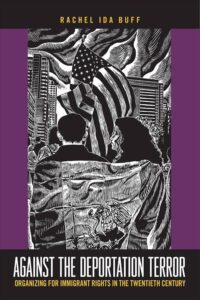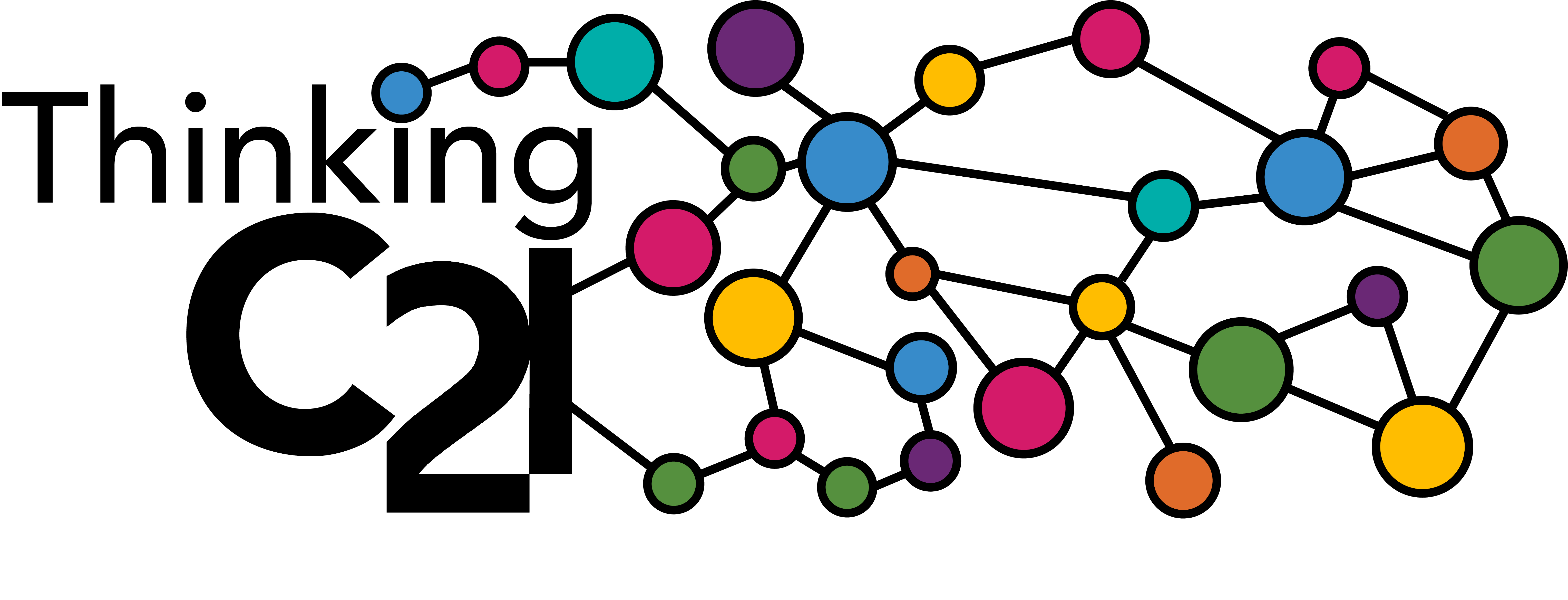by Rachel Buff, Professor of History and Director of Comparative Ethnic Studies at UWM
 During my C21 Fellowship in 2013-14, I worked on a key chapter in my book, Against the Deportation Terror: Organizing for Immigrant Rights in the Twentieth Century, which was published in November 2017. This chapter traces the 1951 founding of the Los Angeles Committee for the Protection of the Foreign Born (LACPFB). I was trying to understand the paths that brought migrants from Mexico and Korea to converge in California, eventually becoming involved in the LACPFB.
During my C21 Fellowship in 2013-14, I worked on a key chapter in my book, Against the Deportation Terror: Organizing for Immigrant Rights in the Twentieth Century, which was published in November 2017. This chapter traces the 1951 founding of the Los Angeles Committee for the Protection of the Foreign Born (LACPFB). I was trying to understand the paths that brought migrants from Mexico and Korea to converge in California, eventually becoming involved in the LACPFB.
Inspired by the expansive view afforded by my temporary office on the 9th floor of Curtin Hall, I drew a colorful map of migrant journeys to California, tracking Korean migrations east, across the Pacific, and Mexican ones north, across the U.S.-Mexico border. Once, when he strayed into my office, C21 Director Richard Grusin remarked how nice it was that I had some of my children’s art brightening up the place.
As I am a better writer than an artist, I will explain the picture I drew, and what I eventually figured out about these two cohorts and about migrant life in mid-twentieth century California. What I learned that year also pertains to the deportation regime currently operative in the United States.
In short: in the early 20th century, Korean and Mexican migrants fled homelands made dangerous by war, eventually seeking refuge in Los Angeles. While they initially found safe harbor in the United States, the global realignment after World War II led to deportation campaigns against them. These deportation campaigns emerged with U.S. military counterinsurgency policy, which sought to suppress popular uprisings around the planet. This connection illuminated the mid-twentieth century map I had tried to draw, becoming central in crafting the chapter I eventually wrote.
The link between global U.S. counterinsurgency and policies toward migrants is also revealing in light of the contemporary deportation regime. A recent presidential description of African, Central American and Caribbean nations as “shitholes” that produce undesirable migrants indicates the depths of white supremacist depravity prevailing in this White House. Perhaps unintentionally, it also points to the U.S. role in producing the conditions that force migrants to leave these places. “Shitholes” that force their citizens to leave home, in other words, are historically produced as a result of global U.S. counterinsurgency policy.
In the early 20th century, the United States had vested, geopolitical interests in both Mexico and Asia. These interests compelled military and diplomatic actions overseas. After Japanese victory in the Russo-Japanese war of 1905, the U.S. responded to the emergence of Japanese military power by seeking to liberate Korea and other Asian nations from Japanese domination. Koreans fleeing Japanese occupation of their homeland looked to the United States as a potential liberator.
During the Second World War, numerous Korean Americans served in the U.S. Office of Strategic Services, helping prepare for a potential invasion of Japan. Allied victory led to the U.S. occupation of Korea and, eventually, to the installation of Syngman Rhee, a dictator friendly to Washington DC. Many Koreans in the diaspora saw U.S. support for Rhee’s anticommunist purges as a betrayal. The State Department worked with Rhee to develop a list of diasporic Koreans to be deported from the United States to the Korean Republic. To the State Department, the deportation of Korean Americans deemed by the Rhee regime to be dangerous dissidents represented counterinsurgency work to secure Asia against communist influence.
At the time of the Mexican Revolution, U.S. fears about regional economic instability led to minor military interventions, such as the occupation of Veracruz harbor in 1914 and the Punitive Expedition of 1916. The U.S. military agreed to police the borders of Arizona and New Mexico and to deport Yaqui Indians fleeing removal to forced labor in hemp plantations in the Yucatan. Many of the Yaqui migrants who made it across the border despite the militarized counterinsurgency directed against them eventually wound up in Mexican American communities in Los Angeles.
Future INS commissioner Joseph May Swing, who as a recent West Point graduate directed Operation Wetback, was part of the Punitive Expedition into the Mexican countryside. There, Swing forged lifetime friendships with some of the Mexican military officers helping to hunt for Pancho Villa; he also formed a racial imagining of Mexican peasants as dangerous bandits and insurgents. When Swing initiated Operation Wetback in 1954, this racial understanding informed his understanding of the “Mexican problem” requiring a militarized response: the policing of Mexican American spaces far from the border, and the eventual deportations of 250,000 people.
The deportation drives of the early Cold War period depicted Mexican Americans and Korean Americans as dangerous, potentially subversive, and “un-American” populations. The LACPFB defended many of those threatened with deportation, prevailing in some cases and losing in many others. Importantly, the LACPFB was a multiracial organization that combatted what they called “the deportation terror.”
Mass media coverage of Operation Wetback disseminated the racist term “wetback” for Mexican migrants and resulted in the disappearance of the names of individual deportees from the media, a trend that, with some exceptions, prevails to this day. (A chapter I started towards the end of my time at C21, “The Names of the Lost,” tracks representations of deportees in the mass media.) Diasporic Koreans like Diamond Kimm and David Hyun were depicted as dangerous communists.
The reviling of Mexican and Korean migrants during the early Cold War period is an important parallel to contemporary discourses of “bad hombres” and “criminal aliens.” The origins of Cold War deportation policy in global counterinsurgency also parallels present-day immigration politics.
Along with the notion of particular nations as “shitholes,” the disregard for conditions prevailing in Haiti, El Salvador, Nicaragua, and Honduras has recently resulted in the termination of Temporary Protected Status (TPS) for migrants from these countries. All of these countries have been subject to prolonged and damaging military interventions by the United States. At best, they are deemed deserving of short-term relief; at worst, their countries are proclaimed to have “recovered,” converting those who remain in the United States into undeserving, economic migrants.
Like their counterparts in the twentieth century, twenty-first century migrants leave homelands gravely impacted by military counterinsurgency. Conditions in Central America and the Caribbean are impacted by decades of military occupation, U.S.-backed dictatorships and ensuing civil wars and violence. Added to this, climate change impacts many regions of the hemisphere. Many people who love their homelands and do not regard them as “shitholes” are forced to leave, because of the long-term, violent effects of counterinsurgency. The creation of “shitholes” that force migration begins at home, in the United States.


